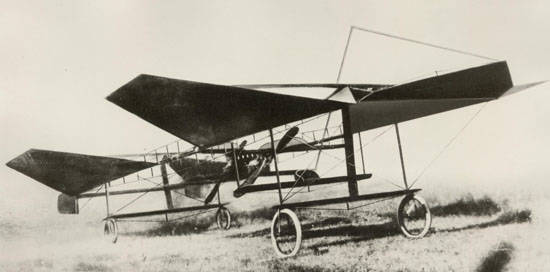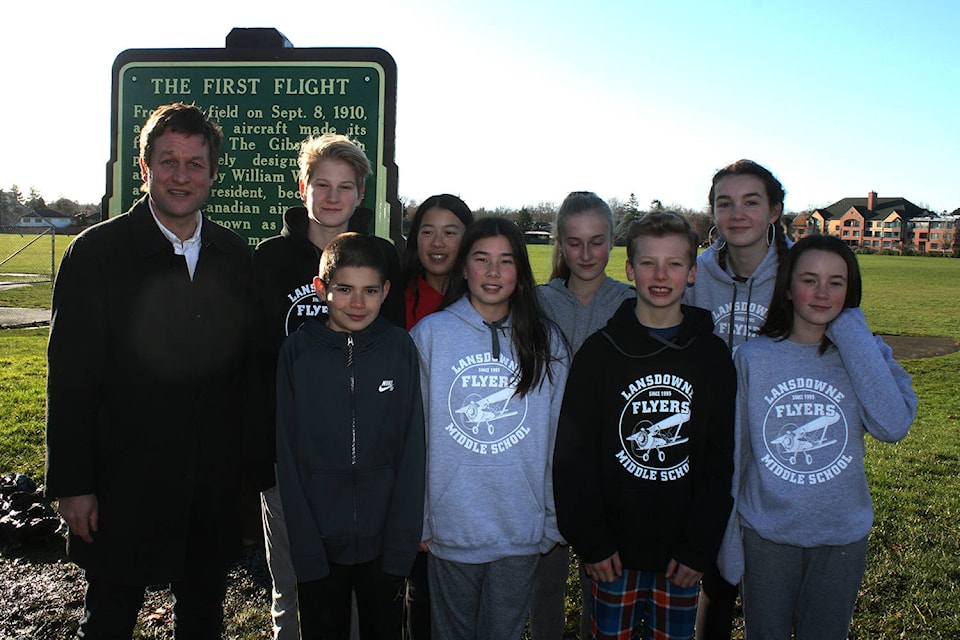A new sign unveiled Wednesday pays tribute to the pioneering spirit of a magnificent Canadian aviator and his flying machine.
Joined by students and administrators of Saanich’s Lansdowne middle school, Education Minister and local MLA Rob Fleming unveiled a sign commemorating the first flight of an all-Canadian aircraft.
“On this airstrip, as it was, history was made,” said Fleming.
On Sept. 8, 1910, Victoria-resident William Wallace Gibson lifted off the grounds in his self-made Gibson Twin plane. Based on the replica that hangs in Sidney’s B.C. Aviation Museum, Gibson was relentless, courageous and slightly mad at the same time.
Built over several months, Gibson’s plane looked more like a large-sized bed on bicycle wheels with wings and two propellers located half-way between the nose and the tail. Aerodynamic it was not.
In fact, it did not have a cockpit in the modern sense, as Gibson controlled the plane, while sitting open air in a horse saddle.
Gibson suffered ridicule and failure along the way. But he always managed to escape serious injury along the way, and eventually prevailed. According to Saanich Archives, it flew over 70 feet longer than the Wright brothers’ flight in 1903. But this success remained unrecognized, and Gibson eventually moved to California where he died at the age of 91. In 1985, his son William Gibson unveiled a plaque at Lansdowne Middle School to honour his flight.
For Fleming, Gibson fits into the tradition of entrepreneurs and innovators, who built up B.C. while following their dreams.
The sign paying tribute to Gibson stands just off Lansdowne Road as part of the Stop of Interest program, which the provincial government initiated in 1958 to mark the 100th anniversary of British Columbia.
(In 1858, Vancouver Island was a separate British colony that did not join B.C. until 1866).
The field from which Gibson lifted off also served as the region’s first airport between 1928 and 1931. “It would have been a really cheap cab ride,” joked Fleming.
While physical evidence of this history disappeared long ago, Lansdowne Middle School continues to breathe its spirit as its school teams bear the nickname of Flyers.
Regional aviation also has a present and a future. “What is great on the South Island is that we still have so many active flying clubs. We make aircraft at plants that employ hundreds,” said Fleming, in alluding to Viking Air Ltd., the Sidney-based manufacturer of the iconic DHC-6 Twin Otter, a familiar sight in local skies.
The region is also home to Canada’s 10th busiest airport poised for future expansion, as the regional population and economy grows.

